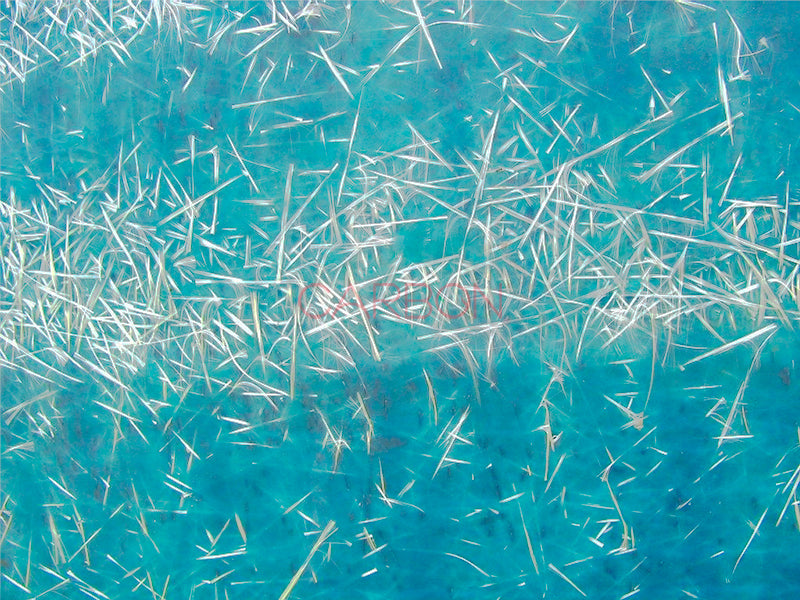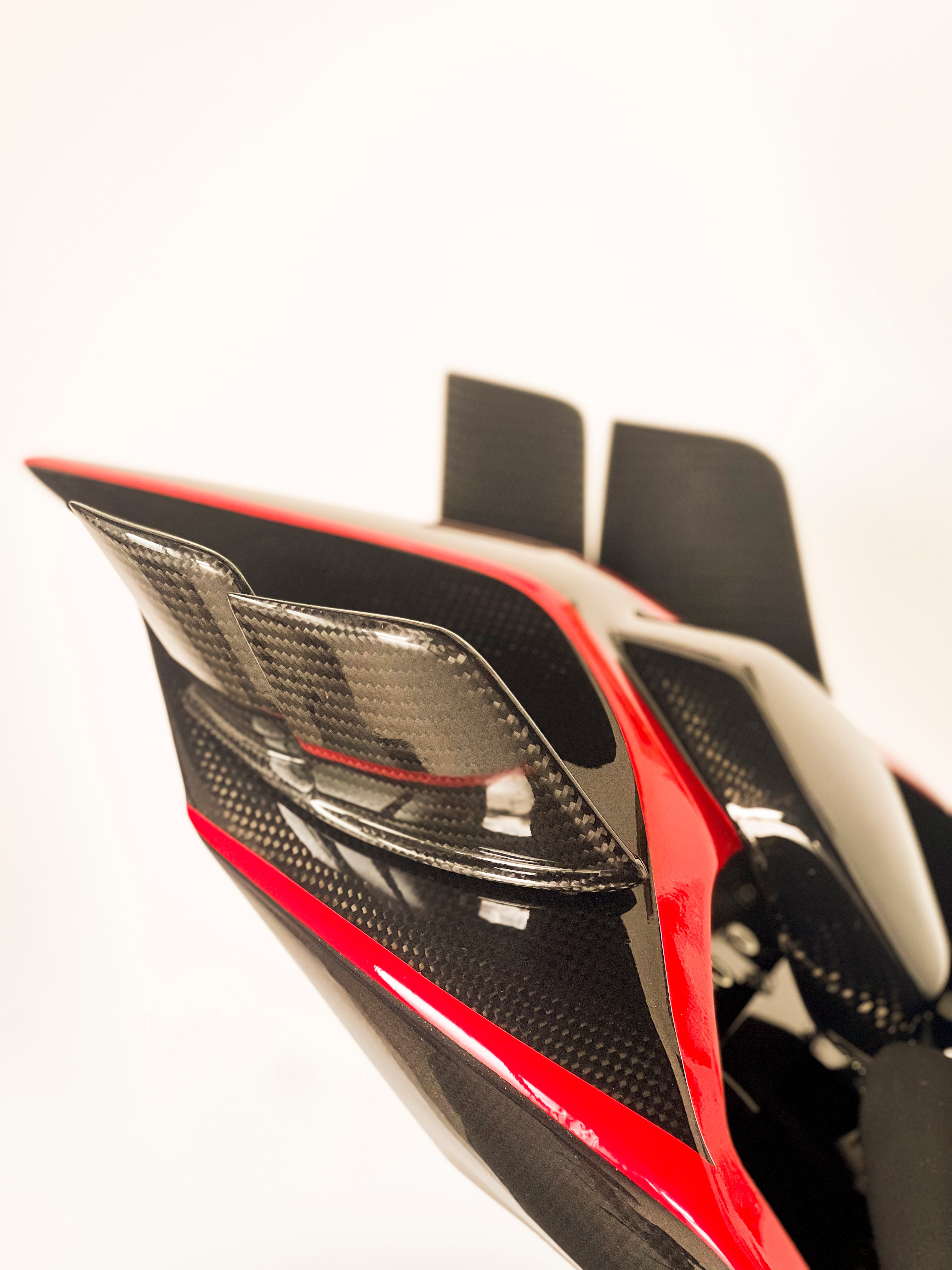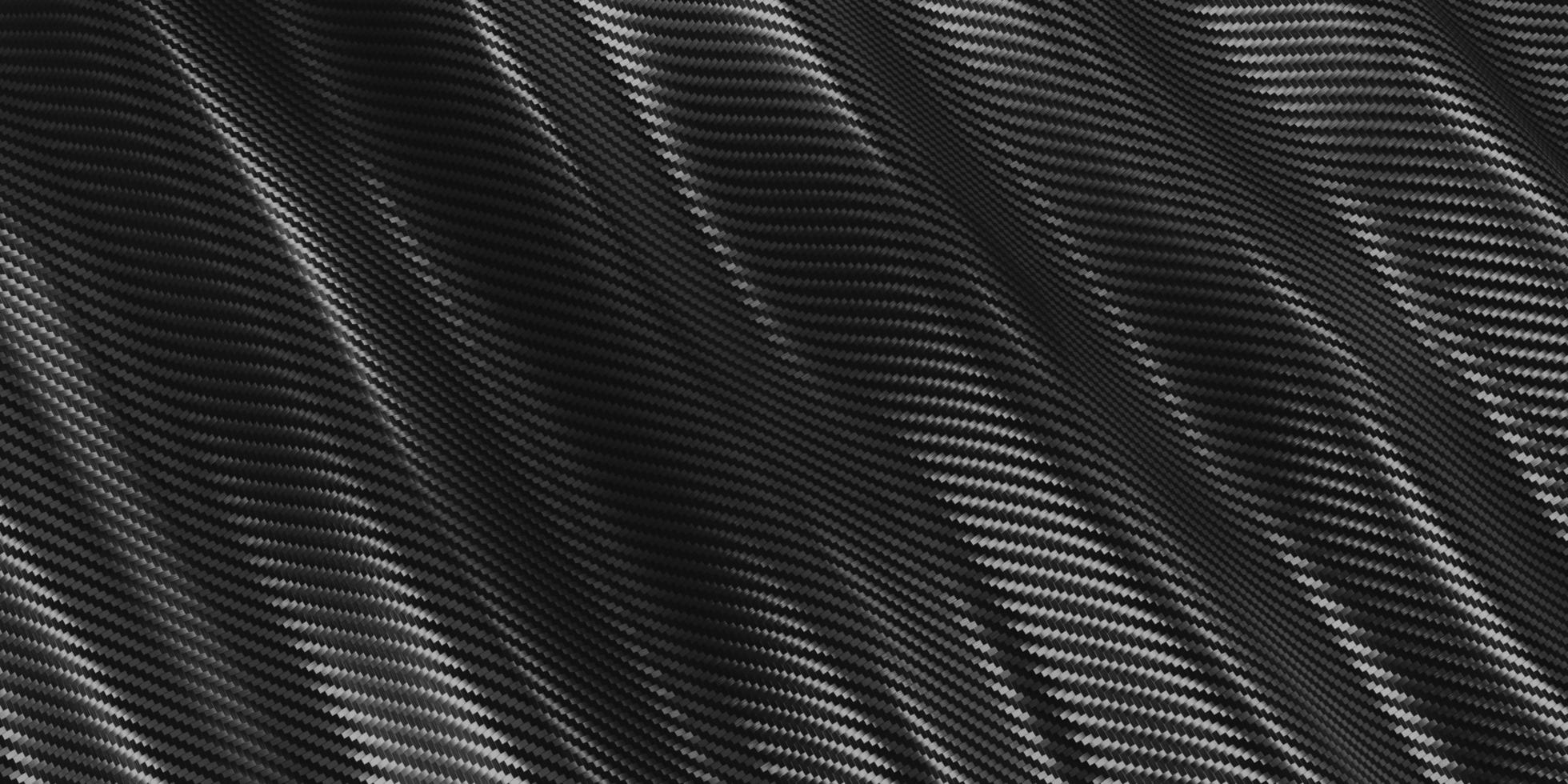Introduction:
In the world of motoring and motorcycling, the incessant search for increasingly lighter and higher-performance materials has led to extraordinary developments in the use of fiberglass in racing motorcycle fairings. This complex material, known for its versatility and strength, has revolutionized the design and performance of racing motorcycles, offering significant advantages both on and off the track.
The properties of fiberglass:
Fiberglass is a combination of glass and polyester or epoxy resin, creating a lightweight yet incredibly strong composite material. Its properties are fundamental for the production of racing fairings and include:
Extremely lightweight: Fiberglass is notoriously lightweight, providing an ideal alternative to traditional materials such as ABS. This feature allows you to reduce the overall weight of the motorcycle, improving handling and speed.
High corrosion resistance: Fiberglass is not susceptible to corrosion caused by atmospheric agents or chemicals. This resistance is essential to keep the fairings in optimal conditions even in the most adverse chemical conditions or various stresses that can arise on the track where oil, fuel and friction reign supreme.
Design Flexibility: Fiberglass can be molded into a variety of complex shapes, allowing designers to create aerodynamic, high-performance fairings. The ability to adapt to intricate designs is critical to maximizing the aerodynamic efficiency and aesthetic appeal of racing motorcycles.
High mechanical resistance: Despite its lightness, fiberglass offers significant mechanical resistance. This feature is essential to ensure that the fairings are able to withstand impacts and stress during high-speed competitions even in the most arduous situations such as impacts or slides.

Image source: https://www.quotidiano.net/sport/motomondiale/motogp-argentina-0b5d190b
Thermal Insulation: Fiberglass also has good thermal insulation properties, protecting the bike and rider from extreme temperature variations. This is particularly important in competitions where conditions can vary rapidly even resulting in situations involving high temperatures which unfortunately can always occur, bringing with them potential additional risks if the fairings are not extremely resistant to high temperatures (just think of the ABS plastic which proves to be much less effective in its fire-retardant capabilities and therefore not suitable and profoundly not recommended for application and use on the track)
Practical track applications: Racing fairings made from fiberglass have become a predominant choice among racing teams around the world. The combination of lightness, strength and design flexibility offers a clear competitive advantage. Motorcycles equipped with fiberglass fairings can tackle curves with greater agility, accelerate more quickly and maintain superior aerodynamic stability compared to their counterparts with traditional fairings made of plastic material which make the motorcycle clumsy and much less easy to handle.
Conclusions: The application of fiberglass in motorcycle racing fairings has undoubtedly led to significant progress in the world of track competitions. The combination of lightness, strength and design flexibility has placed fiberglass at the center of material innovation. However, the evolution does not stop there. A new protagonist is making its way onto the competition stage: AVIOFIBRE, an innovative and distinctive material that represents the next frontier in the engineering of materials for track use.


Aviofiber clearly differs from traditional fiberglass thanks to an advanced process that involves the very fine weaving of fiberglass filaments. This refined technique produces a material that is even lighter, stronger and more flexible than its more established counterpart. Racing fairings made with aviofiber are synonymous with extreme performance, guaranteeing a further competitive advantage thanks to its superior characteristics.
 FIBERGLASS
FIBERGLASS AVIOFIBER
AVIOFIBER
In this scenario of continuous innovation, aviofiber emerges as a revolutionary material capable of pushing the limits of performance on the track. While fiberglass led the way, aviofiber stands as the promising future of racing fairings, demonstrating that the relentless pursuit of advanced materials is the key to reaching the top of the world of motorsport competitions

AVIOFIBER
Tags: Fiberglass Racing fairings Composite materials Lightness Mechanical resistance Design flexibility Track performance Material innovation Aerodynamics Motorcycle racing Aviofiber Fine texture Technological evolution Corrosion resistance Thermal insulation Aerodynamic design Motorsport Materials engineering Competitive advantage Racing motorbikes Motor racing Advanced design Extreme performance Process webbing Fiberglass filaments Impact resistance Atmospheric conditions Corrosion Handling Aerodynamic stability Material technology Innovations on the track Aerodynamic efficiency Wear resistance Wear resistance




